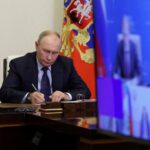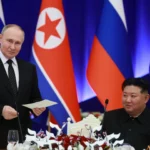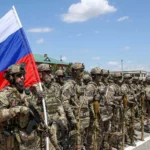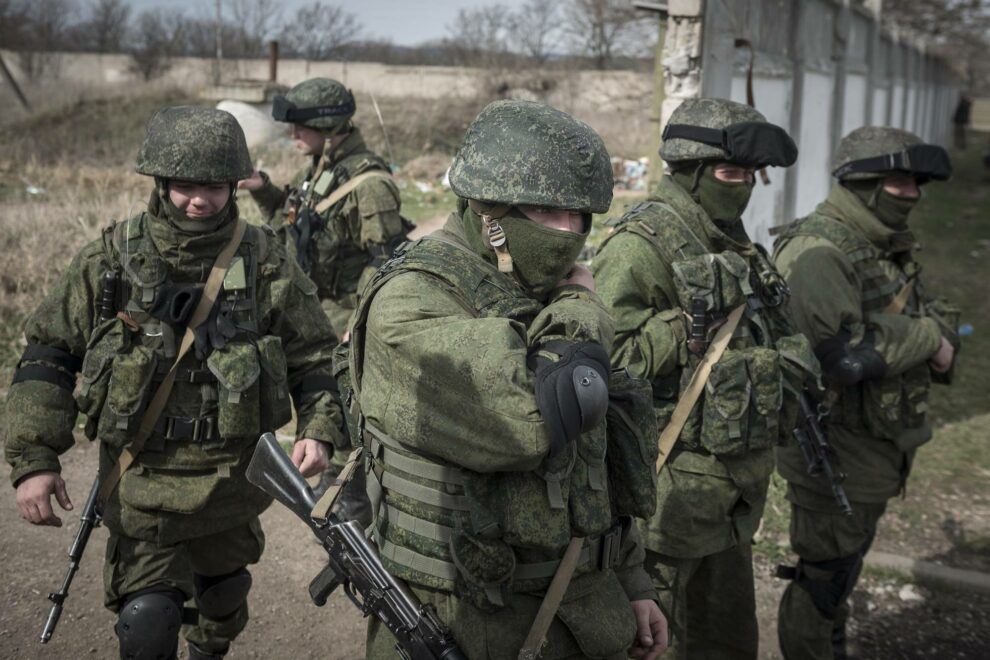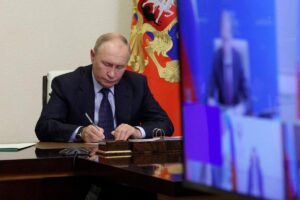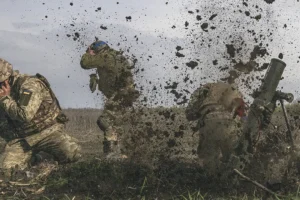It is 16,297km as the crow flies from Auckland to Bakhmut. This city, once known for its sparkling wines and rose gardens was captured by Russian forces in May this year after months of heavy fighting. Now decommissioned St John ambulances are playing a role in the effort to liberate the city.
“We call these Uber for the injured,” says Matthew, a soldier with Ukraine’s Third Assault Brigade, to describe how the seven vehicles that made the journey from New Zealand to Ukraine are being used to help the soldiers here win their war.
/cloudfront-ap-southeast-2.images.arcpublishing.com/nzme/WJ73I6LCQ5BGBNXQAM4IMEC7F4.jpg)
/cloudfront-ap-southeast-2.images.arcpublishing.com/nzme/VFX7YETICVFG3LGJS4XZVVEM5Y.jpg)
“If soldiers are injured on the battlefield, their location is relayed via walkie-talkie. A vehicle is called, and it reaches them and gets them out of danger and into our hands to a safer place,” explains Matthew, who works as a paramedic.
Sometimes it is a specialised medevac vehicle with armour plating, sometimes it is the soft-skinned ambulance we were riding along in. We are interviewing Matthew in Donetsk region close to Bakhmut. He asked us to keep the exact location a secret, as the Russians would bomb it if they knew.
Suddenly, a call from the soldier’s radio station is received. An injured person needs help immediately. There is not enough time to call out an armoured vehicle – we need to get the ambulance into the conflict zone. Our ambulances are usually kept at a reasonable distance from the frontline, as they are much more susceptible to artillery damage, while the armoured ones are kept in a secret location as close to the frontlines as possible
/cloudfront-ap-southeast-2.images.arcpublishing.com/nzme/T5CRFU4ZQJFPZPKB6H624Z6SYY.jpg)
/cloudfront-ap-southeast-2.images.arcpublishing.com/nzme/KUTQ7VVDSJDX7CBM3T5AT3SVJE.jpg)
Everyone puts on a bulletproof vest and we drive off in a hurry. A little later we see smoke rising from several places on the horizon. On a nearby hill, a broken-domed church glitters and the landscape is dotted with cannonball scars. Soon we reach a house where we park the car and run out. There we are greeted by two soldiers who support the third between them towards the car. The limping one, bald on top, with braids in his hair and a handsome Cossack moustache.
We put him on a stretcher back in the ambulance. He is conscious and we learn that an artillery shell landed only 2-3 metres from him, wounding him. He starts a brief conversation with us, leading to a bond between him and my Icelandic photographer. “Iceland!? … Like Thor, Freyja, Frigg and Odin – Iceland?” the soldier says as we speed away from the front line towards the hospital. “I have them tattooed on me! I love runes and mythology.”
We drive back to a clearing close to the spot where the ambulances are stored. Several more armoured casevac vehicles pull up, to transfer even more wounded soldiers from different parts of the frontline to waiting ambulances. There has been significant fighting over the last hour, leading to a large number of wounded. Three other ambulances were ready to receive the injured. A group of paramedics in body armour are wearing blue rubber gloves.
/cloudfront-ap-southeast-2.images.arcpublishing.com/nzme/7PVC3DLG45H7BJHISKQRA3Y4L4.jpg)
They park next to the ambulance, the hatches open and at the same time, we see more badly injured men. The first person we see has a bloody bandage over their eye and the next one has a bandaged arm. He embraces one of the female medics, before limping to a nearby ambulance. In total four people came out injured.
We followed the ambulance in a car so there would be enough room to work on board. When we arrived at a large field hospital in the nearby city of Kostiantynivka in Donbas, the men were led through the door and directly into the hospital where their clothes were cut off, and X-rays were taken of the injuries to see if there were explosive fragments hidden inside. That turned out to be the case with at least one of the people we met.
“This thing is s***,” said the 29-year-old medic with Ukraine’s Third Rapid Assault brigade as he banged against the metal plating of the beaten-up old ambulance they had been using before the Kiwi ones arrived. We were waiting at our secret staging point as we prepared to drive to a village on Ukraine’s frontline.
“A bullet from this Kalashnikov would go right through it,” he said, gesturing at his rifle. It had no way of stopping an artillery shell, but it is what they’ve been dealing with since they arrived in this sector in January. Now, however, they have finally received a vehicle from New Zealand, named Kotahi (Unity).
/cloudfront-ap-southeast-2.images.arcpublishing.com/nzme/NXDSNQC63JCBXDVGZNUN4DD6XI.jpg)
Invaluable vehicles
The ambulance we were riding in was kitted out with a stretcher for a patient, a variety of bandages, splints and syringes In a pouch next to the bed were powerful anaesthetics such as ketamine and morphine.
Most of the seven vehicles have seen between 350,000-400,000km of service in New Zealand, putting them over the limit for safe emergency use on Kiwi roads. In Ukraine, where a shortage of these vehicles leads to preventable deaths, they are invaluable.
Our destination was a small town south of Bakhmut, in mid-September, where there has been fierce fighting between Russian and Ukrainian troops for more than a year. Some will be used for the delivery of humanitarian supplies and treatment of vulnerable civilians in the battlegrounds of southern Ukraine. But the one being used by the Third Assault Brigade, has a more dangerous job – it is evacuating wounded soldiers, sometimes on the frontlines.
Russian forces captured the city of Bakhmut in May, but a Ukrainian counteroffensive has taken significant ground back around the city. The plan is to try and encircle Russian forces in the city and force them to surrender. When we visited the Third Assault Brigade last month, they were amid an assault on the village of Andriivka, a Russian stronghold for months. Today was the day they had finally made a breakthrough.
/cloudfront-ap-southeast-2.images.arcpublishing.com/nzme/RNOQ63NUENBZJK7C3OFHQWKVMY.jpg)
Tenby Powell, the founder of humanitarian charity Kiwi Kare (Kiwi Aid and Refugee Evacuation), said the idea to bring New Zealand ambulances to Ukraine was sparked by his work last year bringing in European ambulances, many from Poland. He contacted Hato Hone St John, who he described as “a dream to work with”. His experience both in business and as a colonel in the New Zealand Defence Forces with former deployments to Israel and Lebanon gave him a unique advantage when operating in a war zone like Ukraine.
The ambulances were donated at the end of their New Zealand lifespan when repair costs had become too high. For Ukrainian soldiers, accustomed to decades-old Soviet-era ambulances, they are a dream to drive and operate.
“This is much better quality than anything we’ve seen before,” Matthew tells me.
In May, the seven vehicles set off on their three-month sea journey from Auckland, stopping in South Korea before being loaded on container ships bound for the Belgian port city of Antwerp. It was then to be a three-day drive to Ukraine’s capital Kyiv.
It had already been a difficult journey. The Ukrainian men due to drive the vehicles had been stopped on the border for many hours, as Ukrainian border guards questioned them on their reasons for leaving.
On August 2, the ambulances finally arrived in Antwerp where they met the Ukrainian team from the Day-by-Day Foundation, Kiwi Kare’s major local partner, an American and a Canadian friend of Powell – both businessmen based in Warsaw – and Powell’s wife Sharon.
It was then on to Hamburg, Germany where we made a pit stop to pick up humanitarian aid from a warehouse owned by a Ukrainian immigrant, before heading to Poznan, Poland and then arriving in Kyiv.
/cloudfront-ap-southeast-2.images.arcpublishing.com/nzme/PU4YZGXYAFHOXIHEK5BXBRQXX4.jpg)
‘It impacts everyone around the world’
“I have two lives, before the 24th of February [the start of the full-scale invasion] and after the 24th of February,” Konstantin Kravets, a 45-year-old Ukrainian told me as we were driving one of the ambulances through Germany. He was a fulltime volunteer and had a good reason for wanting a swift Ukrainian victory. His was from the port city of Berdyansk, which has been occupied by the Russians since the early weeks of the war.
“My father died earlier this year, but my mother, who is elderly, is still in Berdyansk. We have a daughter that she’s never met. My wish is that my mother can hold her granddaughter in her arms.”
The Ukrainians have been attacking in the Zaporizhzhia region, where Kosta’s hometown is located, as part of their much-heralded counteroffensive that began in June. However, progress has been agonisingly slow. Huge Russian defensive lines, composed of trenches, concrete fortifications and minefields have slowed Ukrainian progress. The Russians also have more artillery to fire, and more helicopters and jets to provide their troops with air support.
Kosta is eager to do his part, however small, to deliver troops on the frontline what they need. He is all too conscious of the price, however. “16 of July was my birthday,” he says, “and three days after that I buried my friend, who was blown up by a mine in Zaporizhzhia region.”
I’m often asked how Ukrainians feel about remaining in their country, and whether they feel safe with Russia’s constant missile strikes. In truth, they worry much less for their own safety than that of friends fighting on the frontline, or family still in occupied regions.
From the Hamburg warehouse, where the ambulances were loaded mainly with blankets and mattresses, we were driving on to Warsaw, the capital of Poland which is the traditional staging point for delivering humanitarian aid and military supplies into Ukraine.
/cloudfront-ap-southeast-2.images.arcpublishing.com/nzme/S3AZNWGQIBDK5PNTG74BJI5SWE.jpg)
Shortly after the crew arrived in Kyiv, we hosted a reception in central St Sophia’s Square where six of the ambulances were officially handed over to the Ukrainian Armed Forces. The final is kept as Kiwi Kare’s mobile hospital.
In Kyiv, six of the ambulances were painted black and green to disguise them from the prying eyes of Russian observation drones that look for targets all around the frontline. They also had Maori names painted on them including Rangatira (leadership); Kaitiaki (guardianship); and Wairua (spirit). They had been blessed by an iwi in New Zealand before leaving to grant those driving and riding in them safe passage.
After that, it was time for the Ukrainian soldiers to take the wheels and deliver them to the frontlines in the east and south of the country where they met Matthew and their other drivers. Yet while individual Kiwis have made significant contributions to the war, the war has faded from public view in New Zealand. New Zealand is yet to send any military weapons or supplies to Ukraine, no New Zealand Prime Minister has visited the country, and the subject was barely raised on the campaign trail for last weekend’s election.
/cloudfront-ap-southeast-2.images.arcpublishing.com/nzme/YSAREPUX35FT5IPI5F7ZRLVYO4.jpg)
/cloudfront-ap-southeast-2.images.arcpublishing.com/nzme/EAPPZMXWFRFBFDQNSN74BJXYCI.jpg)
Powell urges Kiwis not to forget about the war, stressing that what happens here will affect the entire world.
“While it seems that NZ is far removed from Russia’s war of aggression in Ukraine, the reality is it impacts everyone around the world… Commodity pricing, wheat, grain and fuel.
“But the real reason we need to support Ukraine,” he says, “is our shared values.
“At its most fundamental, this is a fight for democracy, in the sense that a much larger aggressor is seeking to take away Ukraine’s sovereignty and we should all be concerned about that. This is a reshaping of the world order, and we should all be very concerned about that because the new alliances could very well clump together… it will be of no surprise to me if this spills over to the rest of the region… It is both the economic issue and the moral issue.”
For now, he has product orders for 20 more ambulances, a reminder that the war is still raging at full force.
Source : NZ Herald

